Why does my LG washing machine fill with water and immediately drain?
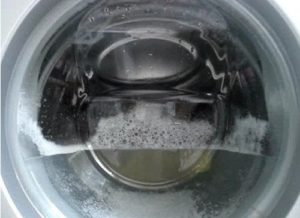 When the machine fills with water and immediately drains without washing, the quality of the wash noticeably suffers. An extended cycle and constant noise from the machine are only the first half of the problem, and the second half will be the remaining dirty things and the risk of flooding the apartment. To return the washing machine to its previous performance, you will have to deal with the problem that has occurred and quickly fix it on your own.
When the machine fills with water and immediately drains without washing, the quality of the wash noticeably suffers. An extended cycle and constant noise from the machine are only the first half of the problem, and the second half will be the remaining dirty things and the risk of flooding the apartment. To return the washing machine to its previous performance, you will have to deal with the problem that has occurred and quickly fix it on your own.
Why does this phenomenon occur?
If the water supply does not stop without stopping the system, then the reasons for the malfunction of the LG washing machine lie in the drainage system. Several malfunctions can lead to loss of control over the water level and its retention in the tank.. Among them, the following breakdowns are more common:
- violations during installation and connection of the drain hose to the sewer;
- clogged sewer system;
- faulty waste fluid release valve;
- breakdown of the pressure switch;
- malfunction of the control board.
As soon as it is noticed that the machine does not hold water in the tank, you must immediately begin diagnostics and repairs. If you continue to use it as before, in addition to the obvious increase in payments for utility services, the owner will face severe wear and tear on the washer’s spare parts and the risk of flooding. Therefore, we quickly begin to look for the “sore spot”.
Checking the drain hose connection
Diagnosis proceeds sequentially from the most common cause of continuous drainage to the rarest and most widespread. The check begins with the drain hose, which often suffers due to improper installation or when the machine is carelessly moved to a new location.There are two ways to understand that the pipe is not attached correctly.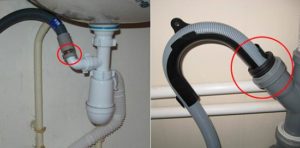
- Visual inspection. Everything is simple here: according to the operating rules, the hose is fixed above the level of the bottom of the washing machine tank. For models from LG, the minimum mark is approximately 0.5 m from the floor level. If the requirement is met, then water will not spontaneously flow out of the drum. Otherwise, the newly collected liquid will not be retained inside the machine and will immediately begin to go down the drain. The pressure switch will react to a leak with a signal indicating a decrease in the level and starting a re-set. And so on ad infinitum.
- Test wash. When it is impossible to get to the hose, we perform a simple test. We start a quick cycle and wait to see if the machine starts draining water immediately. If a drain is detected, you will have to somehow unfold the machine and change the position of the drain hose.
The LG washing machine comes with a plastic loop provided by the manufacturer specifically for attaching the hose to the back panel of the machine.
If everything is in order with the drain hose, then we continue the diagnosis. The next step is to check the sewer pipe.
Sewer pipe clogged
Another possible problem is a clogged communal drainpipe. This often happens when several residents in a house drain water at the same time. The riser overflows, the pressure in the sewer decreases, and the liquid from the drum is pushed into the sewer.
You can confirm your guess with a simple test: open the tap in the restroom or kitchen and observe whether the drained water slows down. If there is a sewer blockage in the house, then similar problems will arise with the drainage in any room.
Only cleaning the pipe can solve the situation.You can do this yourself, using special tools, or with the help of community plumbers. In order not to stop washing, it is recommended to use one trick: disconnect the drain hose from the sewer and lower the free end into the bathtub or sink. The water will begin to flow into the sink and the problem will disappear for a while. There is only one “but” - after washing you will have to clean the ceramics well.
Problems with the water level sensor
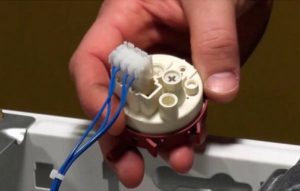 If the continuous draining began suddenly, then the pressure switch was probably at fault. It is he who controls the water level in the tank, sending a signal to the control board to start and stop the intake from the water supply. When a problem occurs, the sensor cannot track the degree of fullness of the container, which leads to exceeding the maximum mark and an emergency “self-draining”. That is, the machine flushes water down the drain, protecting the electronics from leakage. The following problems lead to breakdown of the pressure switch:
If the continuous draining began suddenly, then the pressure switch was probably at fault. It is he who controls the water level in the tank, sending a signal to the control board to start and stop the intake from the water supply. When a problem occurs, the sensor cannot track the degree of fullness of the container, which leads to exceeding the maximum mark and an emergency “self-draining”. That is, the machine flushes water down the drain, protecting the electronics from leakage. The following problems lead to breakdown of the pressure switch:
- oxidized contacts of the device;
- wiring short;
- violation of the sealing of the sensor membrane;
- Damage or blockage of the pressure pipe.
To check the operation of the pressure switch, it must be removed from the machine. Disconnect the washing machine from the network, remove the top cover and at the back wall of the case we look for a round plastic cover. We unscrew the fasteners and carefully inspect the part. If traces of oxidation are noticed on the contacts, then clean the ends with a knife. But when there is damage to the tube or a suspected short circuit in the wiring, replacement is necessary. Replacing the level sensor with a new one is simple and inexpensive.
Before disassembling the washing machine, it is necessary to completely disconnect the unit.
- We purchase a pressure switch that matches the serial number.
- We disconnect the long thin tube from the faulty sensor.
- Unclench the terminals, unscrew the two fixing screws and remove the sensor.
- We install a new pressure switch on the seat and fix it with self-tapping screws.
- We connect the wiring through the terminals.
- We hook the thin hose into place.
After fixing the problem, run a quick test wash without laundry. If water accumulates and does not drain, then the problem is solved and washing can continue. Otherwise, we look for the fault further.
Water intake valve
If there are problems with the intake valve, the machine does not stop dialing - the machine continuously pours water into the tank. The process is constantly repeated, and automatic “self-draining” occurs again. Only replacing the device can resolve the situation.
- We select in advance the valve and removable clamps that match the serial number of the model.
- Disconnect the machine from the power supply.
- Remove the top cover from front washing machines and the side cover if the model is vertical loading.
- We find the valve, which is located next to the available hose.
- We free the device from the pipes and wiring.
- Unscrew the screws holding the housing and remove the clamps.
- We take it out by turning the part a little.
- We install the new valve in its original place.

All. All that remains is to secure the new part with clamps and connect the hoses and wiring. At the finish line, put the lid on top and run a test wash.
Electronics problem
It’s worse if the drain pump turns on due to a malfunction in the control board. Then the corresponding error code appears on the display of the washer, using which you can accurately determine the source of the trouble. First, we try to reboot the system and start washing again. If the situation with the drain kit repeats, it is better to call specialists - further dealing with the electronic module on your own is dangerous, difficult and risky.
In any case, action must be taken. Continuous drainage of water is an alarming “symptom”, which without appropriate “treatment” can completely disable the equipment.
Interesting:
2 reader comments

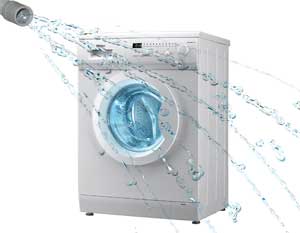


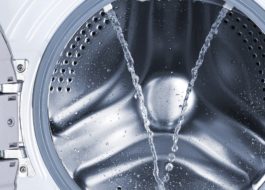
















Great tip! Thanks a lot!
Everything is reliable and understandable. Thanks a lot!